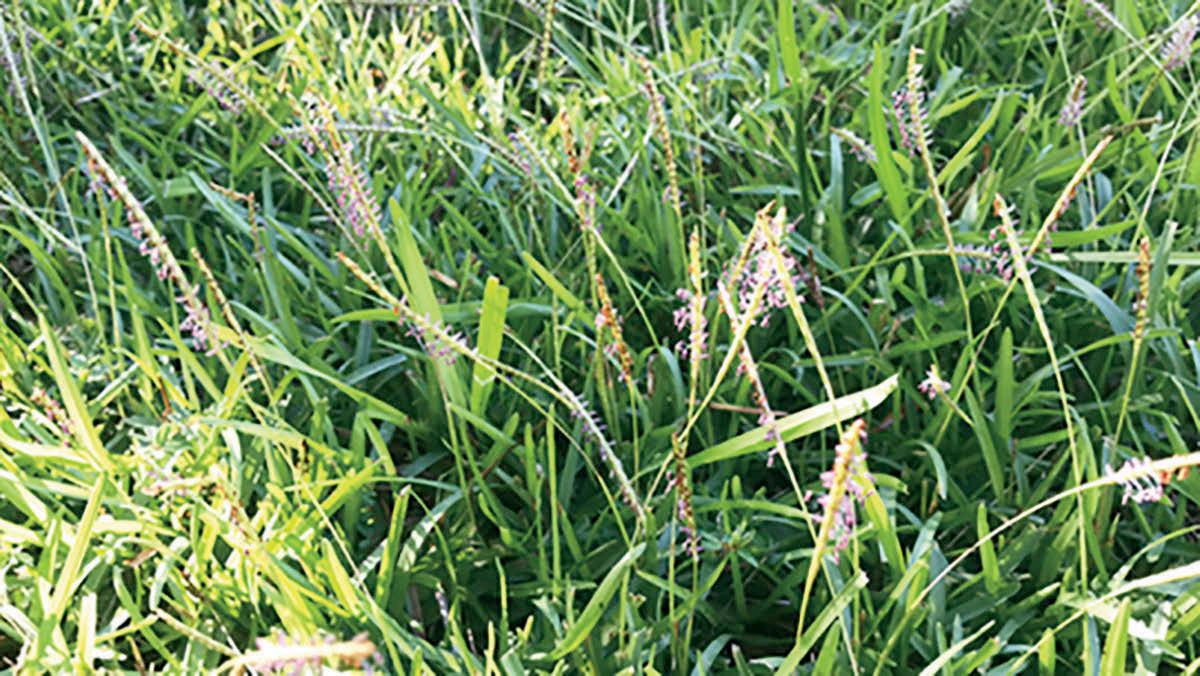
3 minute read
Grass Flowers are Something to Buzz About
GRASS FLOWERS ARE SOMETHING
TO BUZZ ABOUT
USDA ARS Blog posting
Turfgrasses sometimes get a "bad rap" for not giving our bees and other insect pollinators a helping hand on the food front. But Agricultural Research Service (ARS) and University of Georgia (UGA) studies suggest this reputation is unfair—and at least five different genera of bees would agree! In the world, 70 percent of the main crops used for human consumption at least in part depend on bees and other pollinators. Yet, worldwide, pollinators have been in decline for the last several decades. Turfgrasses are often blamed for the decline, and it is often stated that turfgrasses are wind-pollinated, and thus useless for pollinators. The team's findings, published in the November issue of Insects, provided evidence to the contrary. "This is vital research as we aim to protect the natural environment of pollinators that are the foundation of our food supply," said Karen Harris-Shultz, a research geneticist at the ARS Crop Genetics and Breeding Research Laboratory in Tifton, Georgia. "This new knowledge sets the baseline for future research to show that turfgrasses can serve as a food source for pollinators." Centipedegrass is a popular turfgrass found mainly in the southeastern part of the United States and is known for its heat tolerance and low maintenance, making it a favorite among homeowners and landscapers but prior research had suggested that it is of little use to pollinators. However, for many years Harris-Shultz had noticed bumblebees and honeybees collecting pollen from the flowers of centipedegrass lawns. She mentioned this to UGA entomologist Shimat Joseph and UGA physiologist David Jespersen. They decided to start research projects to identify pollinators that pass through centipedegrass lawns and differentiate them from insects that directly collect pollen from centipedegrass flowers. To identify the types of pollinators foraging on the grass flowers, the researchers collected specimens from 11 centipedegrass lawns starting mid-August to the end of September. Using sweep nets, they homed in on insects that were foraging pollen from centipedegrass and were later identified in the lab by Joseph. Their specimens included bumble bees, honeybees, sweat bees and hoverflies. "Our collaboration with the University of Georgia has been exceedingly fruitful," said Harris-Shultz. "We have challenged commonly held scientific beliefs and found that a turfgrass serves as a food source for five genera of bees. We suspect other turfgrasses may serve as a food source for pollinators as well." Now that it is known that pollinators are transiting in centipede lawns, homeowners can play an important role in helping out the insects by adopting new lawnmanagement practices, such as changing how often they mow. This will allow the flowers to emerge from the grass and prevent them from producing seed as quickly. Homeowners can also reduce or change their selection of insecticides to limit the pollinators' exposure to chemicals. This Blog was posted on the USDA ARS website at the link that follows and was last modified on February 12, 2021. (https://www. ars.usda.gov/news-events/news/research-news/2021/grassflowers-are-something-to-buzz-about/) The contact for information on this Blog is Janice Lopez-Munoz. Reach her by email at: Janice. LopezMunoz@usda.gov. The Agricultural Research Service (ARS) is the U.S. Department of Agriculture's chief scientific in-house research agency. Daily, ARS focuses on solutions to agricultural problems affecting America. Each dollar invested in agricultural research results in $17 of economic impact. Editor’s note: Turf News included a reference to this research in the Turf Industry News section of the May/June issue under the heading, “Turfgrass Being Rethought as Pollinator Food Source.” That segment ended with this comment, “More research will certainly be conducted in this area.” This article digs deeper into those findings and notes new knowledge (from the study completed) “sets the baseline for future research” An additional resource for those interested in learning more about pollinators is the USDA website, (https://www.usda.gov/pollinators). That website reports, “USDA supports the critical role pollinators play in agriculture through research and data collections, diagnostic services and pollinator health monitoring, pollinator habitat enhancement programs, and pollinator health grants.”
Inflorescences (flowers) of centipedegrass. The purple anthers, shown here, contain the pollen that is collected by bees. Photo by Dr. Shimat Joseph, University of Georgia linators).










